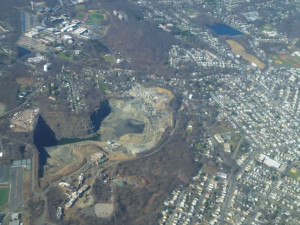
Myrna James Yoo Publisher and Managing Editor Apogeo Spatial and LBx Journal Owner Blueline Publishing LLC Myrna@ApogeoSpatial.com
Dear Readers,
We are seeing so many changes in our midst.
“The only thing that is constant is change,” as ancient Greek philosopher Hericlitus stated. The demise of Google Maps Engine, Google Earth API, and Google Earth Enterprise (GEE) is one that caught me off guard. And yet, new products that can replace it abound. (I should note that much of Google Earth is moving forward in great shape, such as Google Earth Engine, on which we will report in a future issue.)
A significant change is the retirement of the first two U.S. commercial Earth imaging satellites, IKONOS in March 2015, and QuickBird in December 2014, which marks the end of the beginning of an era that brings to companies and NGOs and government agencies and to anyone who has interest, the powerful, beautiful, useful images of the Earth. Launched Sept. 24, 1999 and Oct. 18, 2001 respectively, both satellites worked well beyond their life expectancy. While France’s SPOT satellites (now owned by Airbus) were selling imagery commercially at the time, the launching of these two satellites by U.S. companies enabled an industry whose applications are well beyond what most of us imagined at the time.
Now, we have entered a new era when the convergence of technologies allows these images to truly be useful to businesses, academia, and government on a whole new level. The imagery companies are transitioning from providing “just pixels” to providing “information and solutions” to their customers, and the software companies are following suit. Several companies are providing products that will ultimately replace Google Earth Enterprise, including Esri’s ArcGIS Earth, Vricon’s Globe in 3D, and others. See article here.
Vricon is a start-up founded by DigitalGlobe and SAAB, whose combined expertise and capabilities provide an alternative to Google Earth Enterprise. Their first truly disruptive move was to announce Vricon DMS-10 (their digitalsurface model at 10 meters) for only $1.99/km2. Disruption can be painful for the marketplace, and yet, change is inevitable… Hera Systems is a new Earth imaging company that plans to launch the first of its satellites in October 2016. The initial constellation will be comprised of 9 satellites and eventually will expand to 48. In an attempt to be perceived different from other imagery providers, Hera Systems will offer, in a single package, high-resolution Earth imagery, video, and derived information products showing any location on Earth in near-real time, easy access via a simplified user interface and mobile apps, all at an “affordable” price. While we wish all the companies well, it will be interesting to watch the market. We hope that pricing does not get too commoditized.
In our Spring 2015 issue, we shared how building bridges between the satellite communications (SatCom) industry and the satellite Earth observations industry could benefit both. In this issue, we take this a step further. Beginning in the article here, read about the specific example of how the SatCom industry achieved something that has proven to be very tricky for the Earth observations industry: transitioning disaster response providers’ free services into paying customers, after the immediate response time-frame has ended. Many companies that offer free services suffer from “donor fatigue” – they cannot continue to donate services free of charge to well-deserving NGOs after disasters without hope of revenue coming in. This article shares how it can be done.
I am also thrilled to share that Apogeo Spatial is now demonstrating in action our commitment to long-term sustainability, by joining PrintReleaf. PrintReleaf empowers businesses to certifiably reduce the environmental impact of using paper products by automatically planting trees across a global network of reforestation projects. This program will ensure that as many trees are planted as we use in printing this magazine. See here for more information.




